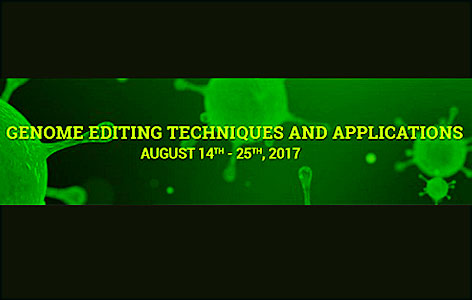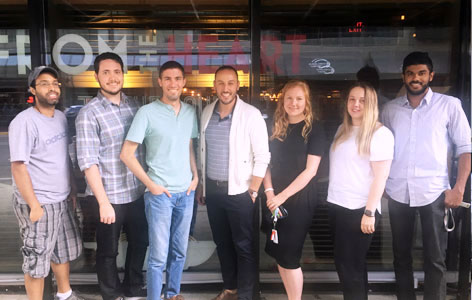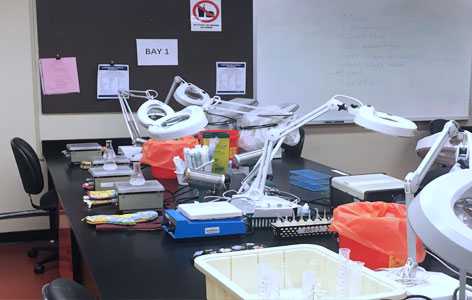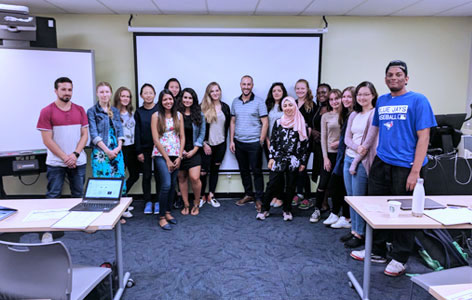
By Dr. Jason De Melo, UHN Postdoctoral Fellow
UHN is a world leader in patient care and health research. In this capacity, UHN participates in the teaching and training of many scientists, technicians, clinicians and nurses who have a dramatic impact on patient care and biomedical research—nationally and internationally. Teaching occurs daily in the hospitals and research institutes, generally in the form of supervisor and mentorship roles from experienced clinicians and scientists, and in cooperation with closely affiliated academic institutions; yet, more formal teaching opportunities are eluding many of our trainees. This has become apparent for our research fellows who require such teaching experiences when applying for new academic positions once their research training here at UHN has been completed. This gap provides a potential opportunity for research trainees looking for more formal teaching experiences.
As a leading research hospital, one advantage UHN has over many other institutions is its ability to quickly incorporate and develop expertise in new and emerging technologies. To this end, no technology has become more topical, disruptive and relevant in the past five years than the genome editing technique CRISPR/Cas. CRISPR/Cas was identified as an adaptive immune mechanism in bacteria to ward off infection by viruses. It utilizes a RNA programmable nuclease (Cas) to cut foreign DNA. This system has been re-purposed for genome engineering. The programmable nature of Cas proteins allows them to be targeted to any piece of DNA in any genome and in contrast to previous genome editing technologies, CRISPR/Cas is much faster and much cheaper. Its applications have already been extended to medical research, agriculture, synthetic biology and therapeutics. UHN and the Greater Toronto Area have many leading research labs utilizing CRISPR/Cas to screen for therapeutic vulnerabilities, produce research models and developtherapeutics for genetic diseases.
The timely and revolutionary nature of CRISPR/Cas thus makes it the ideal topic for a pilot course in research techniques. This course—entitled Genome Editing Techniques and Applications—was developed over the past nine months by myself (Dr. Jason De Melo) and my supervisor Dr. Linda Penn, in collaboration with UHN Research, the Michener Institute for Education at UHN and the ORT (Dr. Penn is the Director of the ORT). Eight instructors participated: myself; two UHN post-doctoral fellows (Drs. Fraser Soares and Zahraa Mohamed-Ali); and five graduate students from UHN (Corey Lourenco, Diana Resetca, Joseph Longo, and Ayesh Seneviratne) and SickKids (Daria Wojtal). The premise of the course was to provide learners with a foundation in the theories behind CRISPR/Cas and provide a simulated research experience in which they would utilize molecular cloning techniques to clone a CRISPR/Cas9 targeting plasmid and edit the genome of a simple bacteria. The format of the course focused on providing practical experience in genome editing techniques for the learners. To accomplish this, the course was designed as a two-week, full-day program comprising theory-focused lectures, active-learning protocol design sessions and a hands-on wet-lab. What differentiated this program from many others was the active learning protocol design, which was tied directly to the hands-on wet-lab. Experimental protocols were not provided for the learners; instead, these were developed by the learners on the morning of the lab session and carried forth in the afternoon. The course culminated in a group project in which the learners designed a genome editing project from the ground up, utilizing the theory and techniques they learned throughout the course to propose an experiment in a grant proposal format.
We launched the registration for this course in late March and we were met with incredible interest despite little to no advertising. We capped our enrollment at 20 students which comprised undergraduate and graduate students, as well as technicians from nearby institutions. The course ran for two weeks in late August and was a tremendous success—both for the students and for the instructors. Many of the students in the course commented on how relevant the material was and on the benefit of an in depth and personal learning experience from very skilled and knowledgeable researchers. In particular, the learners appreciated designing the protocols themselves as this provided a strong and grounded understanding of the experiments that they were completing. All students stated their interest in taking additional courses from experts at UHN. As for the teaching experience, the instructors had the opportunity to lecture and supervise the lab component of the course. This opportunity not only provided the instructors with teaching experience, but also tangible feedback from students that can be included in their CVs and teaching dossiers for future academic applications.
In all, we have proof-of-concept for a teaching model here at UHN that can not only benefit the learners seeking to develop expertise, but also provide the teaching experiences needed by our research trainees for their future careers. As an institution, we are uniquely able to provide this personal teaching experience in highly relevant and technical topics and it was clear from learner feedback that we should continue to provide offerings such as this pilot course. Clearly, they would not only be welcomed by learners, but would also enrich the research environment here in Toronto.

Instructors of the Genome Editing Techniques and Applications course. From (L-R) Dr. Fraser Soares, Corey Lourenco, Joseph Longo, Dr. Jason De Melo (Lead Instructor), Daria Wojta, Diana Resetca and Ayesh Seneviratne. Missing: Dr. Zahraa Mohamed-Ali.

The lab space at the Michener Institute for Education at UHN was used to conduct all required experiments for the Genome Editing Techniques and Applications course.

Students of the 2017 Genome Editing Techniques and Applications course, with their Instructor, Dr. Jason De Melo.

